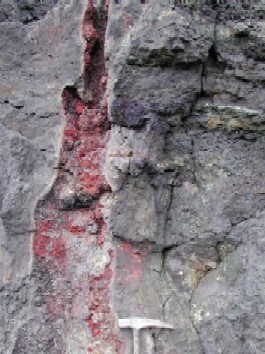Magmatic iron ores in Chile and Sweden
Jan-Olov Nyström
A comparison between the Kiruna iron ores in Sweden and the magmatically formed El Laco iron deposit in Chile sheds new light on the controversial issue about the formation of the Kiruna deposits (magmatic vs. hydrothermal).
The discovery of large iron oxide breccias with Cu-Au-REE has renewed the interest in magnetite-apatite iron ores of the Kiruna type which are considered to be genetically related. Many geologists working with hydrothermal ore deposits regard the Kiruna type, including the well-preserved iron ores emplaced on the flanks of El Laco, a volcano in Chile, as hydrothermal. However, the major orebodies at El Laco would be classified as lava flows and pyroclastic deposits by any petrologist were it not for their extremely iron-rich composition. Subordinate hydrothermal overprinting is present as in any volcanic complex. The volcanic textures and structures of the ore, rather than reflecting a magmatic origin, are believed by hydrothermalists to be relict features of original volcanic rocks replaced by magnetite. The purpose of this project is to present additional evidence for a magmatic origin of magnetite-apatite ores.

Volcanic ash from El Laco, Chile, composed of fine-grained magnetite (gray), small amounts of apatite (thin white layer at right), sublimated iron phosphate (violet hue at center), and a horizon with orange lumps of an iron-phosphorus-sulfur mineral (below the apatite layer). The ore ash is cut by a chimney-like degassing channel, coated by crystals of magnetite that are oxidized to red hematite on the surface. The iron ore, formed by a volcanic eruption ca. 2 million years ago, is of the same type as the Kiruna ore.


